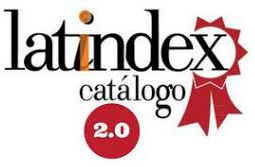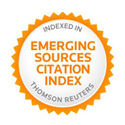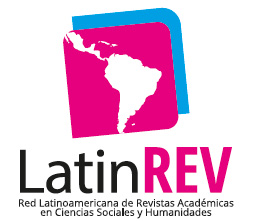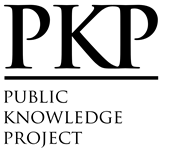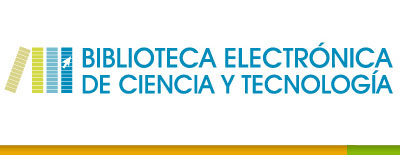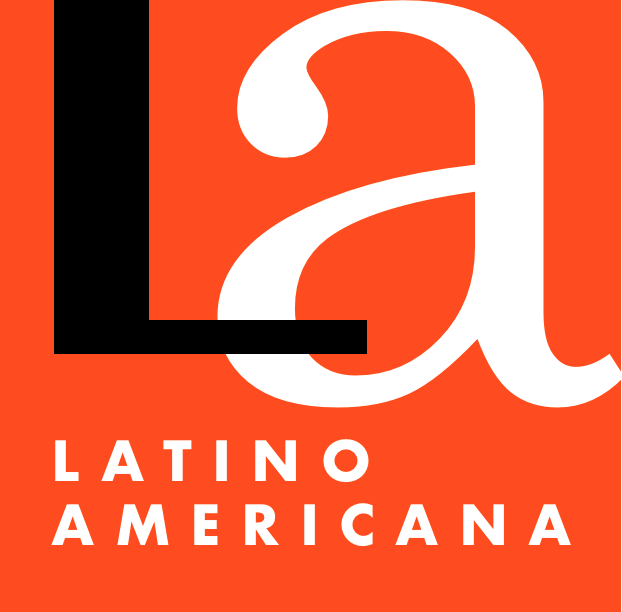A revisão do universo narrativo transmídia a partir da perspectiva de seus elementos constituintes
mundos de histórias, multiversos e narrativas mistas
Resumo
A evolução de tecnologias como realidade aumentada, ambientes virtuais ou o desenvolvimento de inteligência artificial aplicada a diferentes mídias convergentes é um desafio constante para a conceituação dos termos que foram desenvolvidos na última década a partir das teorias originais sobre convergência de mídias e narrativas transmídia. De fato, definições de conceitos como storyworld, multiverso ou narrativas mistas causam importantes assincronias entre as diferentes interpretações e afetam a percepção do conceito de universo transmídia e a análise aplicada de casos. Essa assincronia acelerou a proliferação de termos semelhantes que às vezes adicionam complexidade e confusão à pesquisa científica. Para tanto, este manuscrito busca atualizar o termo 'universo narrativo transmídia', com o objetivo de delimitar e definir as dimensões que o compõem, bem como propor uma nova definição. A metodologia baseia-se em uma revisão sistemática da literatura realizada no Web of Science Core Collection no período 2010-2021 sob o prisma da comunicação, jornalismo e publicidade, portanto, a busca de artigos foi filtrada pelos campos 'Comunicação' e 'Film Radio Television'. Após a análise da amostra de revisão, os resultados permitem delimitar três áreas de conhecimento em torno do objeto de estudo: a criação de histórias ou storyworlds, narrativas mistas e os elementos essenciais e transversais que conectam os diferentes mundos transmídia e multiverso. A análise dos artigos contribuiu para a identificação de dez contribuições que facilitam a identificação do termo. Os resultados permitem estabelecer uma base terminológica sobre a qual esta nova conceptualização do universo narrativo transmedia pode ser analisada de acordo com o desenvolvimento de plataformas, multiversos e ferramentas técnicas com vista aos efeitos de outros campos como a sociologia, antropologia ou educação, entre outros.
Downloads
Referências
Albaladejo Ortega, S. y Sánchez Martínez, J. (2019). El ecosistema mediático de la ficción contemporánea: relatos, universos y propiedades intelectuales a través de los transmedial worlds. Icono 14, 17(1), 15-38. http://dx.doi.org/10.7195/ri14.v17i1.1241.
Alvarados Ramírez, M., Guarinos, V. y Gordillo Álvarez, I. (2011). El relato audiovisual transmediático. Esquivando los media tradicionales. Estudios de caso y propuestas creativas. En VI Congrés Internacional Comunicació I Realitat. (pp. 577-586). Blanquerna, Universidad Ramón Llull.
Arnau Roselló, R. (2016). Estrategias Transmedia y enunciación desde los márgenes: El universo narrativo de The Undocumented, Marco Williams, 2013. Icono 14, 14(1), 233-257. http://dx.doi.org/10.7195/ri14.v14i1.931.
ATLAS.ti Scientific Software Development GmbH [ATLAS.ti 22 Windows]. (2022). Obtenido de https://atlasti.com
Bainbridge, J. (2010). Fully articulated: The rise of the action figure and the changing face of ‘children's’ entertainment. Continuum, 24(6), 829-842. http://dx.doi.org/10.1080/10304312.2010.510592.
Barrientos-Bueno, M. (2013). La convergencia y la segunda pantalla televisiva: el caso de Isabel (TVE). Actas del I Congreso Internacional Comunicación y Sociedad. Universidad Internacional de La Rioja. http://reunir.unir.net/handle/123456789/1731.
Bernardo, N. (2014). Transmedia 2.0: How to create an entertainment brand using a transmedial approach to storytelling. Armando Editore.
Bourdaa, M. (2013). Following the Pattern: The Creation of an Encyclopedic Universe with Transmedia Storytelling. Adaptation, 6(2), 202–214. https://doi.org/10.1093/adaptation/apt009.
Bruni, E. y Baceviciute, S. (2013). Narrative Intelligentibility and Closure in Interactive Systems. En Koenitz, H. et al. (eds.), Lecture Notes in Computer Science, 8230, (pp.13-15). Springer. http://dx.doi.org/10.1007/978-3-319-02756-2_2.
Carreño Villada, J. L. (2016). Transmedia Narrative in the Era of the Social mobile. Carlos, King Emperor. Fonseca, (12), 79-95. http://dx.doi.org/10.14201/fjc2016127995.
Ciammella, F., Ciofalo, G. y Leonzi, S. (2019). “It's a trap”. Transmedia Screen Storytelling: from the immersive experience to participatory interactivity. H-ermes. Journal of Communication, 15, 89-10. https://doi.org/10.1285/i22840753n15p89.
Corona-Rodríguez, J. M. (2017). Arqueología Transmedia: participación de las audiencias en la expansión de las narrativas de la Segunda Guerra Mundial (caso Band of Brothers). AdComunica, (13), 175-199. http://dx.doi.org/10.6035/2174-0992.2017.13.10.
Costa Sánchez, C. (2013). Narrativas transmedia nativas: ventajas, elementos de la planificación de un proyecto audiovisual transmedia y estudio de caso. Historia y Comunicación Social, 18, 561-574. http://dx.doi.org/10.5209/rev_ HICS. 2013.v18.44349.
Dunford, M. D. (2018). Paramount Pictures v. Axanar Productions: identifying the infringed work when an unauthorized production is set in an existing fictional universe. Interactive Entertainment Law Review, 1(2), 73–88. http://dx.doi.org/10.4337/ielr.2018.02.01.
Evans, E. (2011). Transmedia television: Audiences, new media and daily life. Routledge.
Freeman, M. (2017). Historicising Transmedia Storytelling: Early Twentieth-Century Transmedia Story Worlds. Routledge.
Freire-Sánchez, A. (2017). ¿Cómo crear un storytelling de marca? De la teoría a la práctica profesional. UOC.
Freire-Sánchez, A. (2022). Los antihéroes no nacen, se forjan. Arco argumental y storytelling en el relato antiheroico. UOC.
Freire-Sánchez, A. y Vidal-Mestre, M. (2022). El concepto de antihéroe o antiheroína en las narrativas audiovisuales transmedia. Cuadernos.Info, (52), 246–265. https://doi.org/10.7764/cdi.52.34771.
Fuente Prieto, J., Lacasa Díaz, P. y Martínez-Borda, R. (2019). Adolescentes, redes sociales y universos transmedia: la alfabetización mediática en contextos participativos. Revista Latina de Comunicación Social, 74, 172-196. https://doi.org/10.4185/RLCS-2019-1326.
García Villar, M. (2019). Los recursos cinematográficos de Final Fantasy y la narrativa transmediática de Final Fantasy XV. Con A de Animación, (9), 28-33. https://doi.org/10.4995/caa.2019.11328.
García-Marín, D. (2020). Transpodcast universe. Narrative models and independent community. Historia y Comunicación Social, 25(1), 139-149. https://doi.org/10.5209/hics.69232.
Genette, G. (1997). Paratext: Threshold of interpretation. Cambridge University Press.
Ghazanfar, A., Arshad M. y Jackson Brown, A. (2019). Historical Verisimilitudes in Fictional Universe: Cultural Poetics in the Works of Allende. Global Regional Review, IV, 550–556. http://dx.doi.org/10.31703/grr.2019(iv-iv).49.
González-Martínez, J., Serrat-Sellabona, E., Estebanell-MinGuell, M., Rostan-Sánchez, C., y Esteban-Guitart, M. (2018). Sobre el concepto de alfabetización transmedia en el ámbito educativo. Una revisión de la literatura. Comunicación y Sociedad, (33), 15-40.
Gosciola, V. y Tage Verissimo, M. (2018). Mediatización por los jóvenes en la expansión narrativa del Universo Cinemático Marvel. Chasqui. Revista Latinoamericana de Comunicación, 0(137), 113-130. https://doi.org/10.16921/chasqui.v0i137.3456.
Graves, M. (2017). Transmedia Storytelling, Adaptation, and the Reversing of Justified. Adaptation, 10, 1-17. https://doi.org/10.1093/adaptation/apw039.
Gurfinkel, J., Kagan, M., y Libby, J. (10 octubre, 2010). Your Life Will Be a Transmedia Experience (It Already is). [Video]. YouTube. https://www.youtube.com/watch?v=h5ydzMRsh90.
Hermann-Acosta, A., y Pérez-Garcias, A. (2019). Narrativas digitales, relatos digitales y narrativas transmedia. Revisión sistemática de literatura en educación en el contexto iberoamericano. Revista Espacios, 40(41).
Hernández Ruiz, J. (2019). Designing Transmedia Worlds: the case of Plot 28 (2013). Revista Latina de Comunicación Social, 73, 12-32. https://doi.org/:10.4185/RLCS-2018-1319en.
Insomniac Games (2018). Spider-Man [Videojuego]. Sony Interactive Entertainment.
Jenkins, H. (15 enero, 2003). Transmedia Storytelling. Moving characters from books to films to video games can make them stronger and more compelling. MIT Technology Review. https://www.technologyreview.com/2003/01/15/234540/transmedia-storytelling.
Jenkins, H. (2006). Convergence culture: Where old and new media collide. NYU Press.
Kalogeras, S. (2014). Transmedia storytelling and the new era of media convergence in higher education. Palgrave Macmillan.
Kerrigan, S. y Velikovsky, J. (2016). Examining documentary transmedia narratives through The Living History of Fort Scratchley project. Convergence, 22(3), 250–268. https://doi.org/10.1177/1354856514567053.
Kinder, M. (1991). Playing with power in movies. Television and video games: from Muppet Babies to teenage Mutant Ninja Turtles. University of California.
Lacasa Díaz, P. (2018). Expresiones del futuro: cómo se comunicarán las nuevas generaciones. Morata.
Lastra, A. (2016). El poder del prosumidor. Identificación de sus necesidades y repercusión en la producción audiovisual transmedia. Icono 14, (14), 71-94. https://doi.org/10.7195/ri14.v14i1.902.
Leonard, E. (1997). Pronto. Punto de lectura.
Leonzi, S. (2017). La condizione transmediale, in Bernardo, N., Transmedia 2.0. Brand, storytelling, entertainment. Armando Editore.
Marcos Molano, M., Romero Chamorro, S. F. y Santorum González, M. (2019). El Storyworld en la narrativa de los Juegos Documentales Interactivos: el caso de Fort McMoney. Icono 14, 17(1), 39-59. https://doi.org/10.7195/ri14.v17i1.1246.
Miranda-Galbe, J., Cabezuelo-Lorenzo, F. y López-Medel, I. (2021). Analytical Model of Transmedia Storytelling Ecosystems in Audiovisual Fiction: The Spanish Model of The Ministry of Time. Communication & Society, 34(1), 1-13. https://doi.org/10.15581/003.34.1.1-13.
Mohd, U. H. y Syed, M. A. (2021). Tying multiple installments in a single storyworld: Visiting worldbuilding through Power Sphera Universe in Malaysian animation franchise, BoBoiBoy. Media International Australia, 180(1), 131–147. https://doi.org/10.1177/1329878X20978707.
Molpeceres Arnáiz, S. y Rodríguez Fidalgo, M. I. (2014). La inserción del discurso del receptor en la narrativa transmedia: el ejemplo de las series de televisión de ficción. Historia y Comunicación Social, 19, 31-42. http://dx.doi.org/10.5209/rev_HICS.2014.v19.45008.
Mora-Fernández, J. I. (2017). Elementos Narrativos que Sirven para Generar Convergencias e Inteligibilidad en Narrativas Transmediáticas o Narrativas Interactivas Lineales. Icono 14, 15(1), 186-210. http://dx.doi.org/10.7195/ri14.v15i1.1032.
Ojeda, N., San Nicolás Romera, M. A. y Ros Velasco, J. (2019). In the Warcraft Universe We Trust: An Analysis of Transmedia Advertising Strategies in the World of Warcraft Video Game Series (“Battle Chest 3.0,” “Cataclysm,” and “Mists of Pandaria”). International Journal of Communication, 13, 1507-1525.
Page, M. J., McKenzie, J. E. y Bossuyt, P. M. (2021). The PRISMA 2020 statement: an updated guideline for reporting systematic reviews. BMJ, 71, p. 372. http://dx.doi.org/10.1136/bmj.n71.
Pérez-Rodríguez, A. (2020). Homo sapiens, homo videns, homo fabulators. La competencia mediática en los relatos del universo transmedia. Icono 14, 18(2), 1634. http://dx.doi.org/10.7195/ri14.v18i2.1523.
Piñeiro-Otero, T. (2020). Flash Gordon. La expansión del héroe intergaláctico como ejemplo de arqueología transmedia. Historia y comunicación social, 25(1), 45-56. https://doi.org/10.5209/hics.69226.
Podwalyi, M. (2020). Religious Cults in the Fictional Universe of the RPG The Witcher. State Religion and Church, 6(1), 91–104. http://dx.doi.org/10.22394/2311-3448-2020-7-1-91-104.
Postman, N. (1991). Divertirse hasta morir, el discurso público en la era del espectáculo. Ediciones de la Tempestad.
Pratten R. (2015). Getting started with Transmedia Storytelling. A practical guide for beginners. (Second edition). CreateSpace Independent Publishing Platform.
Rampazzo Gambarato, R. y Tárcia, L. P. T. (2017). Transmedia Strategies in Journalism: An analytical model for the news coverage of planned events. Journalism Studies, 18(11), 1381-1399. https://doi.org/10.1080/1461670X.2015.1127769.
Rehak, B. (2016). Transmedia space battle: reference materials and miniature wargames in 1970s Star Trek. Science fiction film and television, 9(3), 325–345. http://dx.doi.org/10.3828/sfftv.2016.9.9.
Rodríguez-Ferrándiz, R. (2017). Paratextual Activity: Updating the Genettian approach within the transmedia turn. Communication & Society, 30(1), 165-182. http://dx.doi.org/10.15581/003.30.1.165-182.
Rodríguez-Ferrándiz, R., Tur-Viñes, V. y Mora Contreras, K. (2016). The Tube on YouTube: TV Series, Media Strategies, and User Tactics in a Transmedia Environment. International Journal of Communication, 10, 1991-2013.
Roig, A. (2010). Cine en conexión: producción industrial y social en la era “cross-media”. UOC.
Rosendo Sánchez, N. (2016). Mundos transmediales: revisión conceptual y perspectivas teóricas del arte de crear mundos. Icono 14, 14(1), 49-70. https://doi.org/10.7195/ri14.v14i1.930.
Rosendo Sánchez, N. (2022). Narrativas transmediales: revisión conceptual y propuesta de una taxonomía y modelo de análisis (el caso español 2006-2016). Tesis Doctoral Universidad de Granada, 2022. https://hdl.handle.net/10481/77260.
Rovira Collado, J. M., y Rovira-Collado, J. (2020). Aproximaciones ACA-FAN al universo transmedia de Neil Gaiman: creación y desarrollo de un sello propio. Quaderns de cine. 15. 71-90. https://doi.org/10.14198/QdCINE.2020.15.06.
Ryan, M.L., y Thon J.N. (2014). Storyworlds across Media. Toward a Media-Conscious Narratology. University of Nebraska Press.
Sartori, G. (2012). Homo videns: la sociedad teledirigida. Taurus.
Scolari, C. A. (2009). Transmedia storytelling: Implicit consumers, narrative worlds and branding in contemporary media production. International Journal of Communication, 3, 586–606.
Scolari, C. A. (2013). Lostology: Transmedia storytelling and expansion/compression strategies. Semiotica, (195), 45–68. http://doi.org/10.1515/sem-2013-0038.
Scolari, C. A. (2014). Don Quixote of La Mancha: Transmedia storytelling in the Grey Zone. International Journal of Communication, 8, 2382–2405.
Selva-Ruiz, D. (2021). La fusión de realidad y ficción en las acciones promocionales no convencionales de Pixar. Con A de Animación, (12), 32-51. https://doi.org/10.4995/caa.2021.15084.
Taylor, C. (2015). How Star Wars Conquered the Universe: The Past, Present, and Future of a Multibillion Dollar Franchise. Basic Books.
Tenderich, B. (2014). Transmedia Branding. EIMO.
Vidal-Mestre, M. (2018). Branding sonoro: Sonokey: el método de impulso emocional y mnemotécnico para las marcas. UOC.
Villani, N. (2020). Marvel's Spider-Man: “Ragnoverso” crossmediale = Marvel's Spider-Man: crossmedia “Spider-Verse”. H-ermes. Journal of Communication, (18), 73-94. http://dx.doi.org/10.1285/i22840753n18p73.
Weaver, T. (2012). Comics for Film, Games, and Animation: Using Comics to Construct Your Transmedia Storyworld. Focal Press.
Wolf, M. J. (2012). Building imaginary worlds: The theory and history of subcreation. Routledge.
Yáñez, J. (2012). La cultura de los nudos. Una aproximación al fenómeno transmedia y a su aplicación en el caso español. L'Atalante: Revista de Estudios Cinematográficos, (13), 28-33.
Yost, G. (Director). (2010-2015). Justified. [TV series]. FX Network
Copyright (c) 2023 Alfonso Freire-Sánchez, Montserrat Vidal-Mestre

This work is licensed under a Creative Commons Attribution-NonCommercial-ShareAlike 4.0 International License.
Os autores detêm os direitos autorais e garantem à revista o direito de ser a primeira publicação do trabalho. Caso uma tradução do artigo já publicado na Austral Comunicación possa ser publicada em outra revista, solicita-se registrar a publicação original na versão traduzida.
A licença utilizada é CC BY-NC-SA, que permite compartilhar (copiar e redistribuir o material em qualquer meio e formato) e adaptar (remixar, transformar e construir sobre o material) nos seguintes termos: atribuição (reconhecer a autoria) e não comercial (o material não pode ser usado para fins comerciais). Atualização: 1 de fevereiro de 2022.
A Austral Comunicación permite ao (s) autor (es) reter os direitos de publicação sem restrições.








